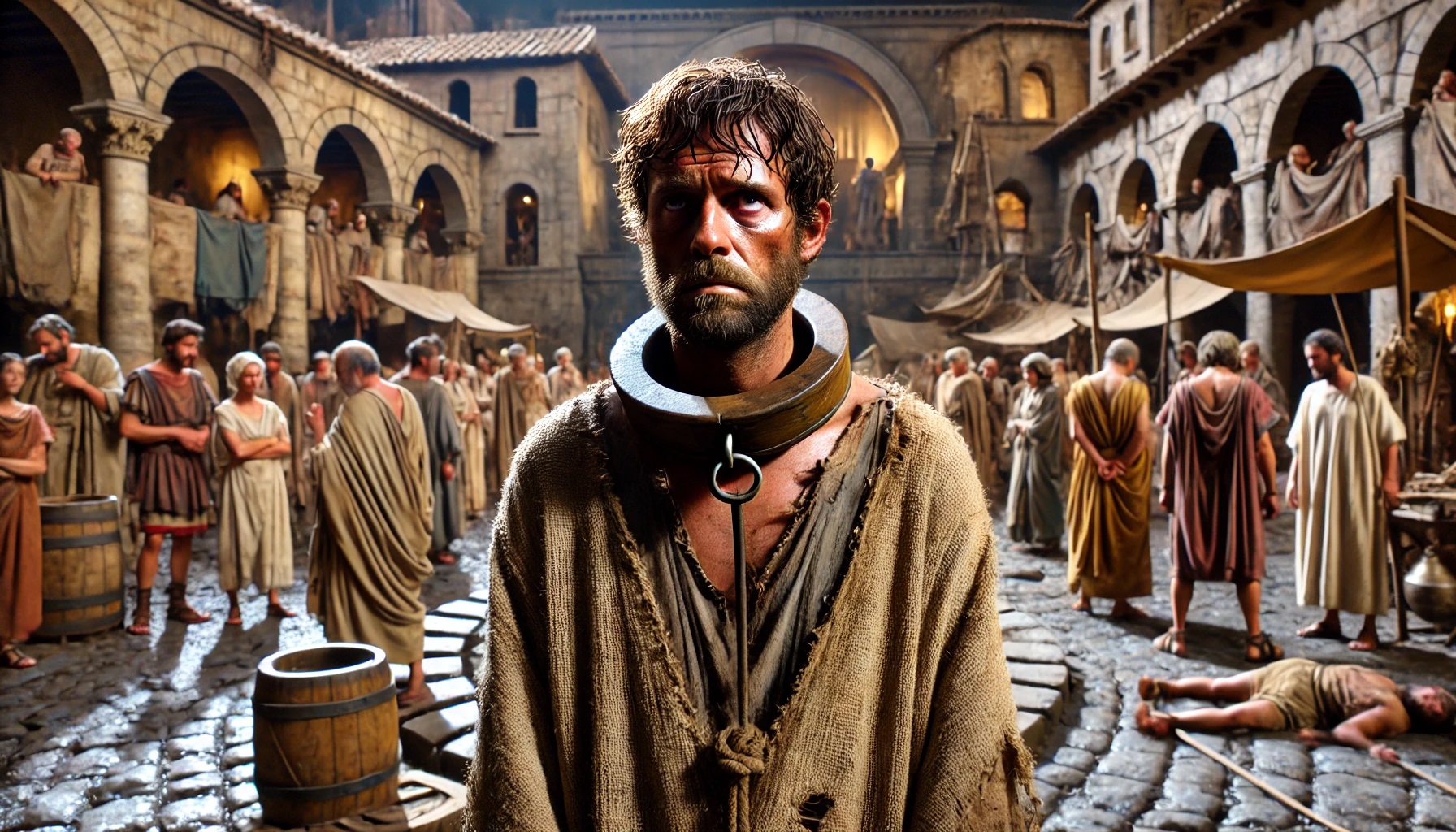Justice and Punishment in Ancient Rome: Law, Society, and Consequences
Updated on: 5 January 2025Reading time: 4 minutes
Roman criminal law was considerably harsher than criminal law today, particularly in most Western societies. When one thinks of punishment in Roman times, images of criminals being crucified or eaten alive by lions (damnatio ad bestias, Latin for "condemnation to beasts") in the Coliseum immediately come to mind.
Roman Punishment for Slaves
Roman punishment varied significantly depending on one’s position in society. A slave had no rights whatsoever and was treated as mere merchandise. Slaves were commonly beaten for various offences.
Another form of punishment involved marking a slave’s forehead. A slave might also be forced to carry a piece of wood around his neck. This humiliating form of punishment was known as the furca. A slave caught committing theft, adultery, or forgery could face the death penalty, which sometimes included crucifixion.

|
It is worth noting that, as merchandise, slaves represented a financial investment. Consequently, corporal punishment was rarely so severe as to permanently impair them. Often, slaves were sent to the equivalent of a modern labour camp to perform tasks such as turning a mill or grinding corn.
Law for Roman Citizens
Roman citizens were rarely sentenced to death. By law, a Roman citizen could only be condemned to death for treason or patricide. Furthermore, a Roman citizen could never be crucified.
Punishments for citizens ranged from fines (damnum) to more severe penalties. The gravest forms of punishment included infamy (ignominia) for theft, interdiction from fire and water, banishment from Roman society (exilium), which entailed the loss of all privileges and property, and even enslavement (servitus). Death was reserved solely for treason or patricide. Banishment was imposed for offences such as forgery or providing false testimony.
For theft, Roman citizens were typically required to pay damages, often many times the value of the stolen object. The Romans distinguished between manifest and non-manifest theft, depending on the proximity of the thief to the scene of the crime. Manifest theft, considered the more serious offence, initially carried penalties such as flogging, enslavement, or even death. Over time, these punishments were replaced with fines, usually amounting to four times the value of the stolen item.
Punishment by Death
Punishment by death in Roman times evokes vivid images of crucifixions or criminals being thrown to lions. However, the methods of execution varied depending on the crime. During Nero’s reign, the punishment for treason involved being stripped naked, having the head restrained with a fork, and being whipped to death.
Patricide was punished by throwing the criminal into a river. Before this, the offender was blindfolded, stripped naked, whipped, bound, and placed in a bag—sometimes alongside a serpent, dog, or cockerel. Other methods of execution included beheading, strangulation, being thrown from a high building or cliff, live burial, and crucifixion (reserved for slave).
SOURCES
- Blood in the Arena: The Spectacle of Roman Power (A. Futrell, University of Texas Press, 2010)
- Spectacles of Death in Ancient Rome (D. G. Kyle, Routledge, 2001)
- The Civil Law: Including the Twelve Tables, the Institutes of Gaius, the Rules of Ulpian, the Opinions of Paulus, the Enactments of Justinian, and the Constitutions (S. P. Scott, The Lawbook Exchange, 2001)

